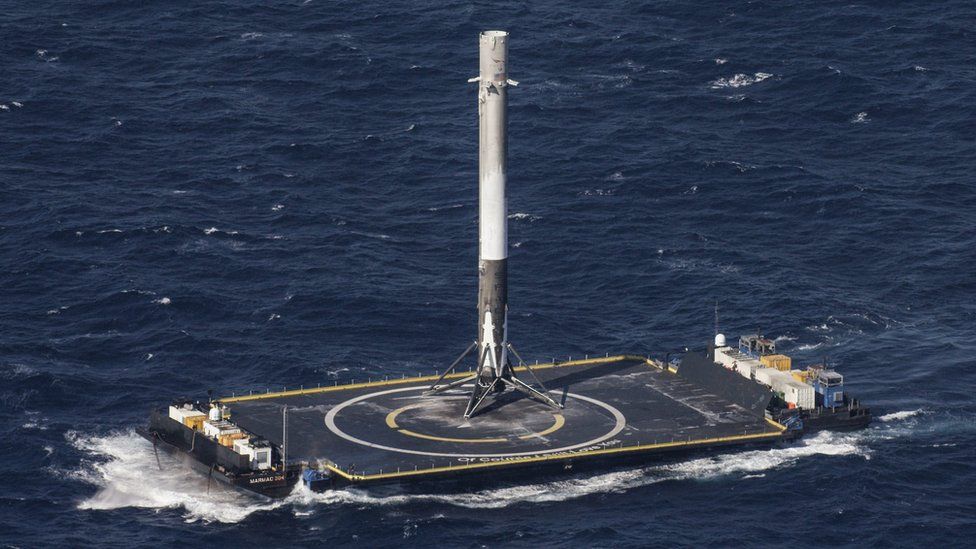SES company first to use 'second-hand' SpaceX rocket
- Published

Luxembourg-based SES says it is going to be the first commercial satellite operator to launch a spacecraft on a "second-hand" rocket.
The company is booked to fly its SES-10 platform on a SpaceX Falcon 9 rocket that was previously used to send cargo to the space station in April.
The booster, after completing its ascent, returned to a touchdown on a drone ship in the Atlantic.
It has since been serviced and declared fit to fly again.
The launch of the Falcon, with its SES-10 payload, is likely to take place towards the end of this year.
It will be a historic moment in commercial rocketry. The traditional booster is expendable; all parts of it are discarded in the climb to orbit.
But now that California-based SpaceX has developed a means to recover flown stages intact, the rocket business looks set to enter a new era.
"We think it's a big moment," Martin Halliwell, the chief technology officer at SES, told BBC News.
"This is the way things are going to go for the industry in general. It's going to manage the price point of the launchers, I hope.
"It will also give us more vehicles. At the moment, after a spacecraft is built and ready, we have a wait of about seven months to launch it."
Mr Halliwell said SpaceX was offering SES a discount on the normal price of a Falcon 9, but that insurers had made "no material change" to the premium being asked to cover the mission.
"Both we and SpaceX have given very detailed answers to all the insurers' questions, and they've come away with the feeling that we've done our due diligence, that we're working closely together and that we're ready to go," he said.
The booster to be used is the first stage of the Falcon 9 that sent more than 1.5 tonnes of supplies to the International Space Station on 8 April.
It lifted off from Cape Canaveral Air Force Station, Florida, at 20:43 GMT and touched down nearly 10 minutes later on a barge stationed roughly 300km to the north east, in the Atlantic Ocean.
This drone ship, appropriately named Of Course I Still Love You, then brought the rocket stage into port, from where it was sent to the SpaceX testing facility in McGregor, Texas.
The booster was put on a stand and its nine engines fired again to prove their flight worthiness.
The private space company SpaceX has successfully landed a rocket on a barge floating off the Florida coast
SpaceX has so far recovered six boosters. The very first, which made its successful return to Earth following a mission in December 2015, now stands outside the company's HQ in Hawthorne, California.
"Re-launching a rocket that has already delivered spacecraft to orbit is an important milestone on the path to complete and rapid reusability," Gwynne Shotwell, the president and chief operating officer of SpaceX, said in a statement.
"SES has been a strong supporter of SpaceX's approach to reusability over the years and we're delighted that the first launch of a flight-proven rocket will carry SES-10."
Reusability has long been rocketry's holy grail.
The space shuttle was famously designed as a partially reusable system, and yet the complexities of servicing the vehicle swamped any savings. The shuttle main engine, for example, although an engineering marvel, contained 50,000 parts.
SpaceX has tried to develop a far more practical model of fly-again rockets.
It says the Falcon's Merlin engines should be able to complete 40 firing cycles or more without significant parts exchange.
SES-10 has been built in the UK and France by Airbus Defence and Space.
Once in orbit, it will provide telecommunications services to Mexico, Central America, South America and the Caribbean.
Jonathan.Amos-INTERNET@bbc.co.uk and follow me on Twitter: @BBCAmos
- Published9 April 2016